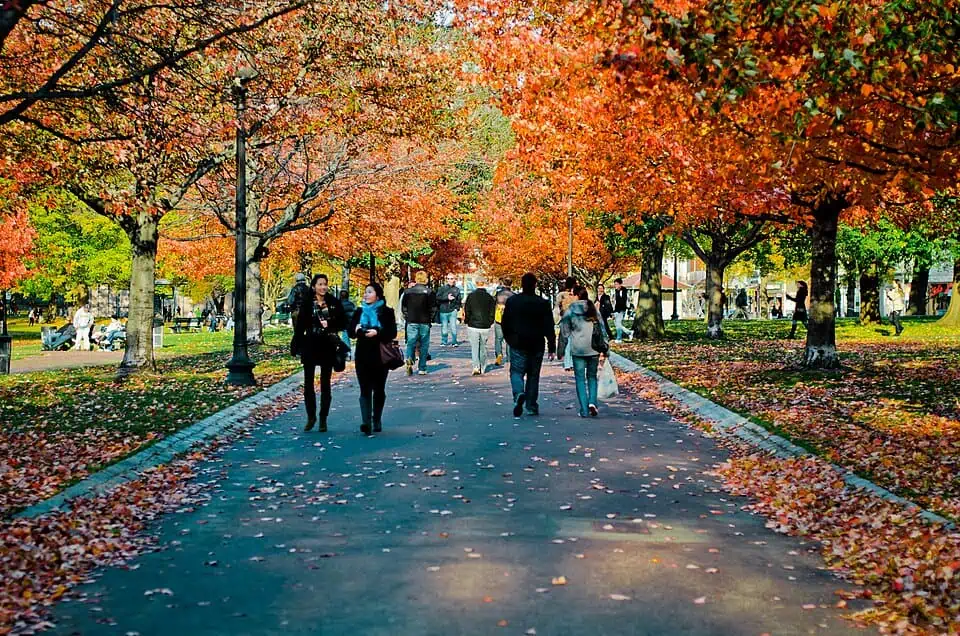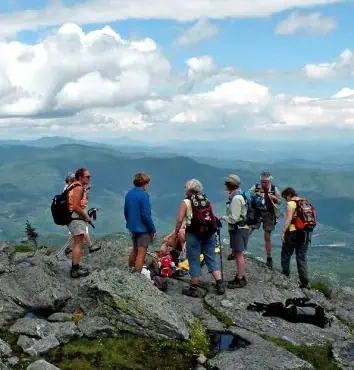Every new year is an invitation to new adventures. So where should you go in 2025?

There’s nothing more disappointing than going to an overcrowded national park. Instead of a life-restoring breath of fresh air, you get stuck in a three-hour bear jam, or have to dodge crowds of tourists on the trail.
There are so many OTHER incredible places in this country of ours, so this year we thought we’d highlight a handful from each region in the continental US: the West Coast (plus NV), Midwest, Mountain West, South and East Coast. We’ve polled the Parks Channel community and selected can’t-miss options for each region of the country. Our criteria: unforgettable destinations that are less crowded, less well-known (in most cases) and less difficult to secure the necessary permits.
From the cascading highlands of Vermont to the nation’s newest national park in West Virginia, the views from the East are hard to beat. Throw in a dose of history with some of the nation’s most famous landmarks and it’s easy to see why some of America’s greatest treasures can be found here. This is a list of places that are somewhat off the beaten path, but which still offer great experiences in nature. Now would also be a good time to go see the role Boston played in the American Revolution, before our big 250th birthday celebration kicks off in 2026.
Have other suggestions? We want to hear them! A submission form is at the bottom of this post. And if your trip involves hotel stays, be sure to try out Parks Channel Member Travel. Free signup will give you access to discounts of up to 50%.
MASSACHUSETTS
FREEDOM TRAIL – BOSTON. The Freedom Trail in Boston is a great reason to head to Beantown. In under an hour you could hike this 2.5-mile time machine, but you’ll want to spend as much time as you can soaking up the 18th century. You’ll walk through 16 historic sites, from Boston Common to Bunker Hill, and discover stories that textbooks can’t capture. What’s cool and unexpected? The charming architecture, vibrant neighborhoods, and the chance to see Boston from a whole new angle. Plus, it’s a fun way to get your steps in while soaking up some revolutionary history.
Highlights:
1. Boston Common: The starting point and the oldest public park in the United States.
2. Massachusetts State House: Known for its iconic golden dome.
3. Park Street Church: A historic church with significant ties to the abolitionist movement.
4. Granary Burying Ground: The final resting place of notable figures like Paul Revere, Samuel Adams, and John Hancock.
5. King’s Chapel and Burying Ground: A historic church and cemetery.
6. Old South Meeting House: Famous for its role in the Boston Tea Party.
7. Old State House: One of the oldest public buildings in the United States.
8. Faneuil Hall: Known as the “Cradle of Liberty,” it was a meeting place for revolutionaries.
9. Paul Revere House: The colonial home of American patriot Paul Revere.
10. Old North Church: Famous for the “One if by land, two if by sea” signal.
11. Copp’s Hill Burying Ground: Another historic cemetery.
12. USS Constitution: The world’s oldest commissioned naval vessel still afloat.
13. Bunker Hill Monument: Commemorates the Battle of Bunker Hill.

VERMONT
CAMEL’S HUMP. Vermont’s third-highest peak, at 4,083 feet, is a striking natural landmark with its distinctive double-humped silhouette that inspired its name. Early settlers likened the mountain’s shape to a camel’s back, and the name stuck. Interestingly, Samuel de Champlain’s 17th-century maps referred to it as “Le Lion Couchant” (The Resting Lion), emphasizing its dramatic profile.
Camel’s Hump offers a variety of hiking trails, including the challenging Long Trail, which traverses its summit.

The peak rewards hikers with panoramic views of the Green Mountains, Lake Champlain, and the Adirondacks. The best time to visit is during late summer and early fall (August to October), when the weather is mild, and Vermont’s famous foliage creates a breathtaking backdrop. Spring and early summer are also lovely, though trails can be muddy from snowmelt. Always check local trail conditions and prepare for unpredictable mountain weather when planning your trip.
WEST VIRGINIA
NEW RIVER GORGE. America’s 63rd national park – designated as such in 2020 – is a breathtaking destination known for its rugged beauty and rich history. Despite its name, the New River is one of the oldest rivers in the world, estimated to be 3 million years old. Its powerful currents carved the gorge’s dramatic cliffs and steep valleys, creating a paradise for adventurers and nature lovers alike.
The area’s history is deeply tied to coal mining. During the 19th and early 20th centuries, the gorge was a bustling hub of activity, with mining towns springing up along the river. Today, remnants of this era, such as abandoned mines and railroads, can still be explored, offering a glimpse into the lives of the miners who once worked here. One of the park’s most iconic features is the New River Gorge Bridge, completed in 1977. Spanning 3,030 feet, it’s one of the longest steel single-span arch bridges in the world and serves as the centerpiece of the annual Bridge Day festival, where BASE jumping and rappelling enthusiasts gather.
Visitors to the park can enjoy a variety of activities, including world-class whitewater rafting, rock climbing, hiking, and mountain biking. The New River Gorge is also a haven for wildlife watchers and photographers, with its diverse ecosystems supporting everything from peregrine falcons to black bears. For those seeking a more relaxed experience, scenic drives and picnics along the river provide serene opportunities to take in the gorge’s stunning landscapes.
The best times to visit are spring and fall when the weather is mild, and the park’s vibrant wildflowers or autumn foliage are on full display.
Find out more about New River Gorge National Park from Parks Channel creators National Park Diaries and Megatherium Club.
NEW YORK
ADIRONDACK STATE PARK. The biggest, baddest park you’ve never heard of! Located in northern New York, this is the largest publicly protected area in the contiguous United States, sprawling over 6 million acres. It’s a unique mix of public and private land, governed by strict environmental protections that preserve its wilderness character. Unlike traditional state parks, it encompasses entire towns, lakes, and forests, making it a mosaic of natural beauty and human history.
The park was established in 1892 to protect the Adirondack Mountains and their watersheds, partly in response to concerns about deforestation and water supply for New York City. It became a symbol of the conservation movement, with the state constitution designating the land as “forever wild.” One historical anecdote highlights the park’s cultural legacy: in the late 19th century, it became a retreat for wealthy industrialists who built extravagant “Great Camps” along its pristine lakes. These camps, including those of the Vanderbilt and Rockefeller families, still stand as examples of rustic luxury architecture.
Visitors can enjoy a wide variety of activities throughout the park. Hiking enthusiasts can explore over 2,000 miles of trails, including the challenging Adirondack High Peaks, with 46 summits over 4,000 feet. Water lovers can paddle or fish in the park’s 3,000 lakes and ponds and 30,000 miles of rivers and streams. In the winter, the park transforms into a haven for skiing, snowshoeing, and snowmobiling. For those interested in history and culture, museums like the Adirondack Experience provide insight into the area’s natural and human history.
Top photo of the Adirondacks by EyeEm/Freepik
So what did we miss? If you've got a suggestion for 2025 travel we'd love to hear about it!
Please log in to Parks Channel to submit your post.

